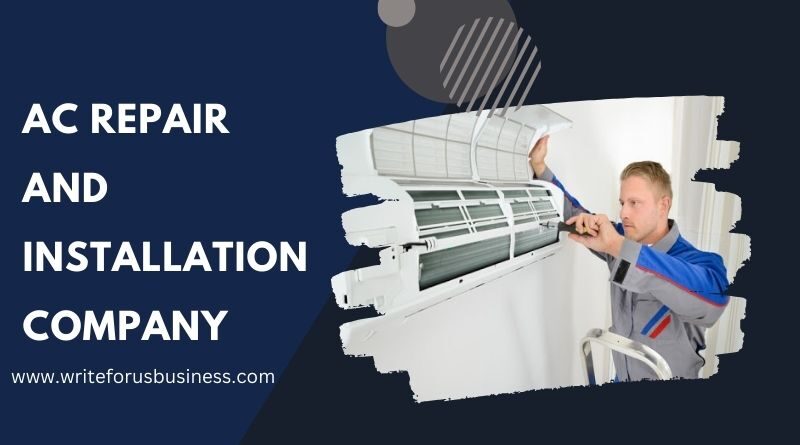Don’t Sweat It: Call South Florida’s Best AC Repair and Installation Company All Year Cooling Today
Your home’s comfort counts for so much. As weather patterns shift in El Nino versus El Nina years, it’s hard to determine how hot it will be, how much more rain to expect, or how much stronger storms are going to be. These shifts are crucial considerations when it comes to your AC system.
From the 1980s to 2010, you’ll find the NOAA reports average yearly temperatures of 77.24º F, and rainfall for the year totaled 61.9 inches at the Miami International Airport. In the 1990s to 2020, the average yearly temperature was 77.4º F, while yearly rainfall jumped to 67.41 inches. Using the period from 2006 to 2020, it increased to 77.84º F, and yearly rainfall was slightly higher at 67.8 inches.
All of these increases may seem small, but they are still important to consider when you own a home in South Florida. Humidity and warmth create the optimal conditions for mold and mildew to grow.
The Risk of Having a Moldy Home
A damp, mildewy, or moldy home increases the risk of children developing asthma. People exposed to mold are likely to deal with constant nasal congestion, skin rashes, wheezing, and red, itchy eyes. People with other health conditions, such as COPD or immunosuppression, are more likely to experience fungal infections and breathing difficulties. Indoor air quality is vital to your health.
Keeping your home cool and dry is an important step in preventing costly mold issues and protecting your health. Despite this importance, many homeowners don’t understand the best schedule for cleanings and inspections, what they need to do in between cleanings, and how to tell when it’s time for a new system.
How Do You Check and Clean Your Central AC System?
You have a central AC system that keeps you cool, but few homeowners understand how an AC system works and what components require constant maintenance or cleaning. Here’s a list.
1. Filters
In South Florida where systems are used throughout the year, it’s important to check your system’s filters regularly. If you have pets or a lot of household dust, more frequent checks are needed. Don’t be surprised to replace your filter each month or possibly twice a month.
That’s the first step to AC maintenance. You should also check the evaporator and condenser’s coils for dirt. When they get dirty, an AC system has to work harder to try to cool your home, and it may not be able to do so. Your bills increase, as well as the indoor temperature and humidity levels.
2. Coils and Coil Fins
The condenser is outside and dust, lint from a dryer vent, pollen, and even grass clippings if you have a mulching lawnmower are problems. Foliage from shrubs, trees, and bushes can become problems. Check that there is plenty of space, at least two feet, between any greenery and your outdoor AC system.
The inside evaporator coils are also susceptible to dust and pollen buildup. Pet hair can also impact them. You also need to make sure they’re kept clean and free of grime.
While you’re checking those components, there are aluminum fins on the coils that are easy to bend and crimp, and your system works better if airflow isn’t blocked. A fin comb is a tool that can restore them to their original position.
3. Condensate Drains
As an AC system works, it’s common for condensation to form on the coils and drip into a drain pan. That drain pan has channels that go outside to release the moisture. Keeping those channels clear of mildew or algae is critical, otherwise, you could end up with wet flooring or walls, which increases the risk of mold and mildew growth. Keep these drain channels clean.
4. Ducts, Registers, and Grilles
Ducts don’t need much maintenance, but pet hair, dust, and small particles may cling to the salts on the register and grille covers. This blocks airflow and makes your system work harder. Keep them clean.
If you notice unusual smells or foul odors, reach out to All Year Cooling. Mildew and mold growth in a duct is an issue that needs to be addressed by a professional.
Our Recommended Maintenance Schedule
What is All Year Cooling’s recommended maintenance schedule? We break it down by frequency.
1. Daily and Weekly
There’s not a lot to do each day or week. We recommend listening to your system when it starts up, runs for a cycle, and powers down. If you notice any changes to the sound it makes, it’s important to talk to All Year Cooling’s South Florida AC installation professionals. The earlier you catch components that are starting to wear out or fail, the better it is for your system.
Check that your drain pan isn’t filled with water. If it is, you have a blockage somewhere. Running vinegar and water or bleach and water through the line periodically helps prevent this. If you have a clogged condensate line and notice the drain pan isn’t draining as quickly as it did, get the problem fixed before moisture seeps into your walls, which creates ideal conditions for mold growth.
When you’re sweeping, dusting, and vacuuming, your home’s floors don’t forget your duct grilles and registers. Take an upholstery attachment to your vacuum or run the duster over any registers and grilles to remove pet hair and dust.
2. Monthly
Tasks that you should do yourself each month include air filter replacements and a visual check of the case of the outdoor components for things covering the vents, such as leaves, twigs, and grass. Make sure no shrubs or plants have grown enough that they’re closer than two feet from the outdoor unit’s casing.
3. Twice Yearly
Twice a year is a good time to check your coils for a build-up of grime. You might be able to switch this to a yearly task in some areas, but if you have sandy soil and lawn to mow, you might find grass clippings and dirt build up quickly.
4. Yearly
Once a year, you should have a professional AC company clean your coils, check the pressure, straighten any bent fins, and check for leaks and other issues that may not be as easy to spot. When you take the time to have your system professionally maintained, you end up with a system that can last longer and it also helps with warranty and insurance coverage if something goes wrong.
5. Every Three to Five Years
Ducts should be cleaned every few years. A good rule of thumb is five years, but homes with multiple pets or a dustier environment may need ducts to be inspected and cleaned more often. If you’re not good at remembering to change your AC air filter, that can also lead to dust building up inside your ducts, and dust can mix with moisture and encourage mildew and mold growth, at which point duct sanitization or duct restoration become two valuable services.
All Year Cooling’s experts are fully trained and insured to repair air conditioners from most manufacturers. Whether your system is 10 years old or brand new, we help you keep your system in excellent shape and offer honest advice if your system is reaching the end of its life.



